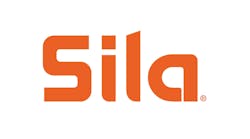Sizing potable water heaters is often a perplexing issue with little to go on besides your intuition and mechanical background. The dead of winter is often the time those sizing demons come back to haunt contractors in the northern states where incoming service line water can easily see a low of 35°F.
I was sitting at my home office desk contemplating a resolution for an installation I had visited earlier that evening, where someone had installed 50-gal. and 80-gal. electric water heaters in tandem and botched the piping arrangement. The owners were upset because they’d been promised a never-ending supply of hot water for their 75-gal. whirlpool and walk-in master bath shower with dual shower faucets; showers (for the two children’s bathrooms); laundry; and kitchen sink with dishwasher.
As plumbers, we need to explore the lifestyles and habits of our customers to determine how they intend to use their hot water. In this case, the owners indicated their evenings went like this: dinner followed with dishwasher running; throw in a load of wash; both kids heading off for showers; parents showering followed with a soothing relax in the whirlpool tub. No wonder they were running out of hot water! You can’t know if you don’t ask.
Did I forget to mention there was another load? A radiant floor sucking Btu’s out of these overtaxed electric water heaters via a flat plate heat exchanger, which just happens to be serving the master bath. And they want that floor to be warm when?
So while I’m sitting there crunching the numbers, my e-mail arrow lights up. One of the things I’ve enjoyed most about writing this column is getting to know other mechanical contractors from around the world. Here’s the opening e-mail I received from Mike Williamson, vice president and service manager for General Plumbing Inc. in West Palm Beach, Fla. By sheer coincidence, he was working on a similar problem.
“The existing lay out is a guest house in a well-to-do neighborhood,” Mike wrote. “The original spec was one 50-gal. electric 4500/4500. Since then another has been added and now I have been asked to look at it. Not enough storage and recovery time is slow. Existing voltage is 208. Okay, this is what we have to overcome:
- (2) 95-gal. soaking tubs with 6 GPM - the hot side only.
- (3) large showers with 6 GPM - the hot side only
- (5) lavatory faucets
- (1) bar faucet
“Working off the existing heaters, you start turning down the cold water in four minutes to maintain a warm mix. After six minutes you are out of hot water. This is with the tub and one shower being used at the same time. This customer does not want their guests to run out of hot water. The existing space will only accommodate two 80-gal. heaters. It was suggested we use two 80-gal. tanks with 5000 Watt elements, each @ 208 volts, elevate the storage temperatures and use a mixing valve to deliver hot water for a longer period of time. We have 60 to 70 PSI and a hot water return line with an aquastat controlling the line temperature.
“I know you don’t know me or who I am,” Mike concluded. “I’m just a plumber trying to help one of my customers and I get a lot of information from your articles as well as the many different trade publications that are out there. Thanks for the job you do every day.”
Wow! I thought my customers had a high demand for potable hot water generation! This job of Mike’s sounded more like a commercial application. I had a few questions too. Like what am I doing up here in cold weather while he’s working under swaying palm trees? He was only too happy to inform me it was a balmy 80°F while I was heading out for another no-heat call! My initial reply follows:
“Mike, is electricity the only fuel of choice for this home? Let me know and I’ll work up a scenario. Sounds all too familiar! I’m working on an almost identical problem with twinned (undersized) electric water heaters that also supply radiant floor warming to the master bath. How far away from the main home and what’s their fuel? Two 95-gal. soaking tubs in the guest house? I might need to plan an overnight visit to figure this one out. Looks like an 18-GPM hot water draw just for showering? How many guests and what’s the showering schedule they anticipate? Showering and soaking tub usage at same times? They’d better like taking a cold bath with just two 50-gal. heaters!
“What are your coldest inlet water temperatures, the finished storage target temperature and the bathing delivery temp? I’ve used 55/140/102 for those numbers to arrive at several conclusions. 12-GPM flow rate for the hot water alone with one tub and one shower running if that’s a 6-GPM rate on the hot side alone for each one. Your timed run out for hot water supports that flow rate. It looks like you could see a 24-GPM flow rate on the hot side if all three showers and one tub are running at the same time? The line sizes in the guest home, coming in from the main house and street will be a determining factor for maximum flow rates.
“So, you’ve got a combination of storage and Btu input/recovery problems. Twinned electric 80’s won’t cut it, which you already know. Instantaneous capacity, adequate standard tank generation, storage or a combination of these must be added to alleviate your customer’s dilemma. Storage alone is not necessarily the answer due to space constraints and energy usage. Then again, in order to provide hot water without any storage at the flow rates you’ve indicated would require a Btu input in excess of half-million! Somewhere in the middle lies the best solution.”
To be continued next month...
Dave Yates owns F.W. Behler, a contracting company in York, Pa. He can be reached by phone at 717/843-4920 or by e-mail at [email protected].

